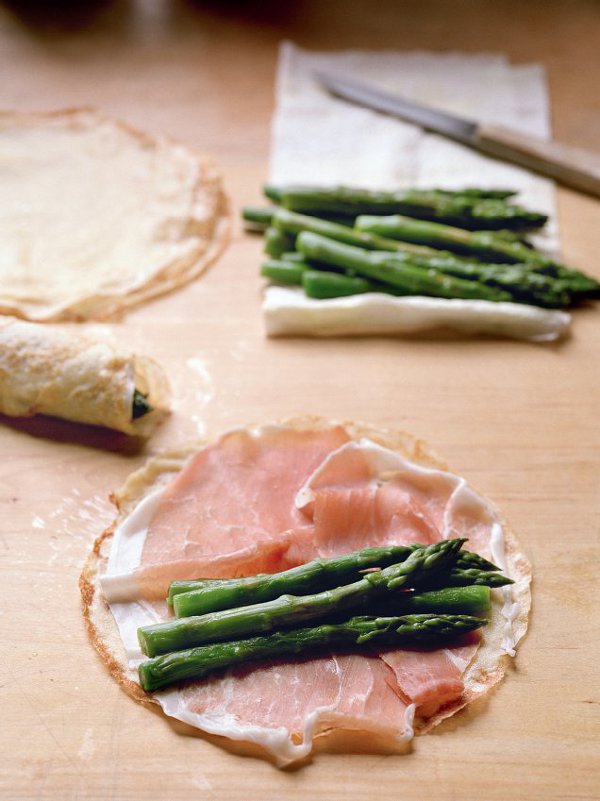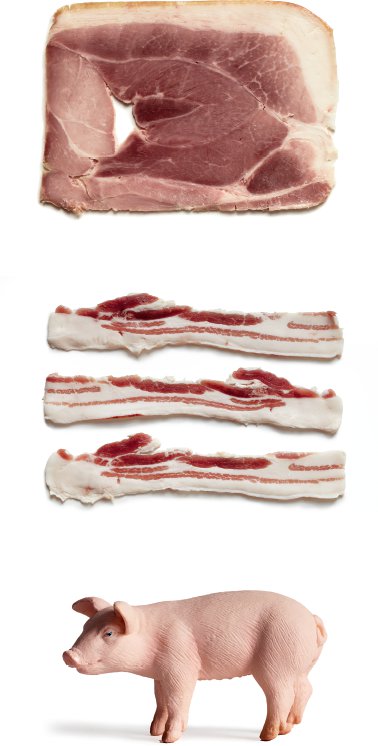Good Cook (14 page)
Authors: Simon Hopkinson
serves 4, for a light lunch, say
2 tbsp oil
14 oz fresh chicken livers, well trimmed and cut in half
4 tbsp butter
1 large onion, peeled and finely chopped
2 cloves of garlic, peeled and sliced
1 scant tbsp coriander seeds, crushed
5 cloves
4 cardamom pods, lightly crushed
2 large pinches of dried chilli flakes
11 oz basmati rice (Tilda or other brand)
15 oz chicken stock
1 heaped tbsp currants
4–5 strips of lemon zest
salt and freshly ground black pepper
2 tbsp coarsely chopped coriander leaves
2 limes, halved
I cannot call this fragrant dish of rice anything other than a pilau, as it leans so much more towards the Asian than it does to the French pilaf, simply because of the spices involved. That being said, the process involving rice ratio to liquid remains, as always, the same: volume or weight of rice to one and a half of liquid. Veer not from this directive at your peril.
Note: many will say that rice needs to be washed, rinsed and soaked before beginning to make a pilaf/pilau. However, when using a very good-quality basmati rice (such as Tilda) I have never found this to be necessary. Moreover, when I have done this washing and soaking business in the past, occasionally thinking I should because my peers have talked of it so insistently, hey presto!—my pilaf has overcooked, perfectly.
Preheat the oven to 375°F.
Heat the oil in a heavy-based, lidded pot until almost smoking. Add the chicken livers in a single layer and briefly fry on each side for seconds only; they must still be undercooked within. Lift out and put on to a plate. Add the butter to the pot, fry the onions and garlic until pale gold, then stir in the coriander, cloves, cardamom and chilli. Tip in the rice and gently stir around for a couple of minutes
until it is well coated with butter. Pour in the stock and bring up to a simmer. Tip in the currants and lemon zest, taste the liquid and then season with salt and pepper. Bring up to a simmer and now reintroduce the chicken livers, burying them underneath the rice. Switch off the heat, put on the lid and cook in the oven for 20 minutes.
Remove from the oven, but don’t take the lid off for a further 5 minutes; this allows the pilau to finish cooking. Gently fluff up the rice with 2 forks, taking care not to break up the livers, while also deftly mixing in the chopped coriander. Serve directly from the pot on to hot plates. Hand the limes separately, so that each person may spritz their own serving.
serves 4
for the pancake batter
¾ lb flour
2 eggs
large pinch of salt
9 oz milk
4 tbsp butter, melted, plus extra for cooking the pancakes
for the hollandaise sauce
3 egg yolks
2 sticks unsalted butter, melted
a little salt and freshly ground pepper
juice of ½ a lemon
16 asparagus spears, trimmed and peeled
8 very thin slices Parma ham
These utterly delicious pancakes hark back to my initial apprenticeship during the school holidays, aged sixteen, in a French restaurant called La Normandie, a few miles away from where I grew up, in Bury, Greater Manchester (then Lancashire). Although this is not their first outing from me, it is seventeen years since I first referred to them in
Roast Chicken and Other Stories
, so do please make some if they are new to you or when you feel in the mood to make pancakes, together with the accompanying hollandaise sauce. Also, try to wait for an English spring, when our home-grown asparagus is in season.
To make the pancake batter, whisk the flour, eggs, salt and half the milk together in a mixing bowl until smooth. Add the butter and enough of the remaining milk to achieve a thin, pouring cream consistency. Leave to stand for 30 minutes. To make the pancakes, use a 8 in, preferably non-stick frying pan (or a favorite pancake pan if you have a nicely “seasoned” one) and in it melt a small amount of butter. Allow it to become hot and sizzling, then pour in enough batter to thinly cover the base of the pan. This first pancake is usually a bit of a mess, so chuck it out and start afresh. Now, without greasing the pan again, make 8 thin pancakes and put to one side.

To make the hollandaise sauce, whisk together the egg yolks with a tiny splash of water in a stainless-steel pan over a very low heat, until thick and smooth. Now, off the heat, continue to whisk while pouring in the melted butter in a thin stream, leaving behind the milky residue that has settled in the bottom of the butter pan. Season the sauce and sharpen with lemon juice, to taste. Keep warm.
Preheat the oven to 350°F, and a grill to hot.
Boil the asparagus in well-salted water for about 5 minutes or until tender when pierced with a sharp knife. Once done, lift them out with a slotted spoon and drain on a dish towel.
To assemble the délices, take a pancake, lay upon it a slice of ham, then arrange 4 asparagus spears on top. Roll up and place in a lightly buttered baking dish. Bake in the oven for about 15–20 minutes, or until just beginning to crisp at the edges. To make absolutely sure that they are heated through, pierce one with a thin skewer, leave for 5 seconds and lightly press against your bottom lip. If only warm, give them a few more minutes.
Remove the délices to a warmed serving dish and coat each one carefully with a spoonful of hollandaise sauce, running it along their length. Very briefly flash the délices under the broiler until only just gilded by the heat. Serve at once.
serves 2
for the sandwich filling
9 oz grated Gruyère
2 small egg yolks
1 tbsp Worcestershire sauce
1 rounded tsp mustard powder
2 pinches of cayenne pepper
a few shakes of Tabasco sauce (optional, but it gives a nice extra kick)
a little salt
a touch of cream, but only if you think the mixture too thick, once made
4 slices of thin, white bread (square in shape)
4 thin slices of cooked ham
olive oil
These incredibly moreish sandwiches are based upon those served at Harry’s Bar, in Venice. If actually sitting at the bar at Harry’s, they are casually offered to those sitting there, maybe, like me sipping an ice-cold Martini. It is impossible to refuse—although be aware that they may easily appear on your drinks bill …
Very yummy chicken croquettes might also make occasional appearances, but it is this variation on the French “croque monsieur” that wins hands down, every time. The original recipe comes from
The Harry’s Bar Cookbook
(first published in Great Britain by Smith Gryphon, 1991).
Note: the filling quantity will give you far more than you need for the following recipe, but it keeps well in the fridge for a week. It further freezes well, packed into small, lidded pots for future occasions.
Put all the filling ingredients (except the cream) into the bowl of a food processor and blend until smooth; it should be easily spread, so now add the cream if needed. Spoon out into a plastic container, cover and keep in the fridge until ready to use.
Take a slice of bread, cover with a thin layer of cheese mixture almost to the edge, place a slice of ham over that and finally place another slice of bread on the ham. Press down firmly and then repeat the process for the second sandwich. Cut off the crusts and liberally brush (or spray) each side of the sandwiches with olive oil.
Now, heat a large, non-stick frying pan until medium-hot. Cut each sandwich in half to give 4 rectangles, and fry in the dry pan until gorgeously golden and crusted on each side—about 2 minutes per side. Eat forthwith, and not without napkins.

serves 4
for the filling
10–12 thin slices of smoked streaky bacon, cut into slivers
4 egg yolks
3 whole eggs
14 oz heavy cream
a little salt and much freshly ground white pepper
a generous scraping from a whole nutmeg
for the pastry
5 tbsp butter
5 tbsp lard
7 oz all-purpose flour
pinch of salt
2–3 tbsp ice-cold water
Pedant that I am, it had always annoyed me that, when fashioning a lovely quiche Lorraine, the little chunks of bacon always sank to the bottom of the pastry crust while the quiche cooked. As I have always preferred a deepish enclosure to the custard filling, this irritating scenario soon became tiresome, and needed solving. And why was it that the same quiche in a fine Parisian pâtisserie had nicely golden bits of bacon poking up out of its eggy surface, and mine did not? Well, the trick is to use the thinnest bacon slices rather than, say lardons (so readily available now, ready cut, I know) and cut them into small slivers. These will then float to the surface, but also nicely suspend themselves throughout the mixture as it sets.
Result, as they say.
To make the pastry, cut the butter and lard into small chunks and place in a large bowl with the flour and salt. Gently rub the fat into the flour using fingertips until the texture resembles very coarse breadcrumbs. Mix in only just enough water to bind the mixture together. Lightly knead this dough until well combined, dust with flour and slip into a plastic bag. Place in the fridge for 30 minutes before using.
Preheat the oven to 350°F and also place a flat baking sheet in there, which will help to cook the base of the quiche more evenly.
Roll out the pastry as thinly as possible, use to line a 8 in wide by 1½ in deep tart pan, lightly prick the base with a fork all over, then bake blind. This is done by lining the uncooked pastry crust with a sheet of kitchen foil and filling with some dried beans, for instance. It is then cooked for about 15–20 minutes on the flat baking sheet, removed from the oven, and the foil and beans transferred to a container for future use. Return the pastry crust to the oven for a further 10 minutes or so, until it is pale golden, crisp and well cooked through, particularly the base.
Lightly fry the bacon in a dry, non-stick frying pan for a minute or two, until crisp and some of the fat has run out. Drain on paper towels and spread out evenly over the base of the cooked tart crust. Whisk the egg yolks and whole eggs together, stir in the cream and season with salt, pepper and nutmeg. Pour the custard into the pastry crust and cook for 30–40 minutes, or until nicely puffed and the surface of the custard is pale golden and just set. Eat warm, or at room temperature. Hot quiche, straight from the oven, does not taste good; it will, in fact, be tasteless.

